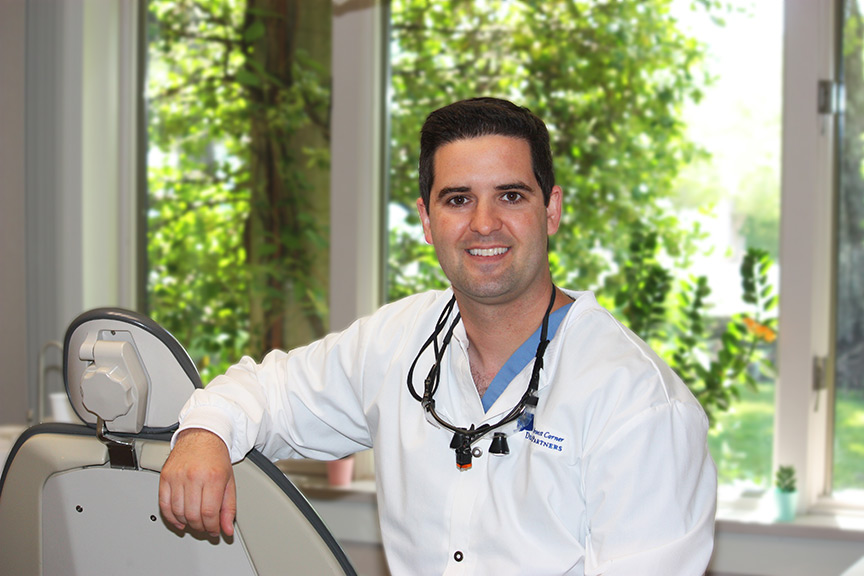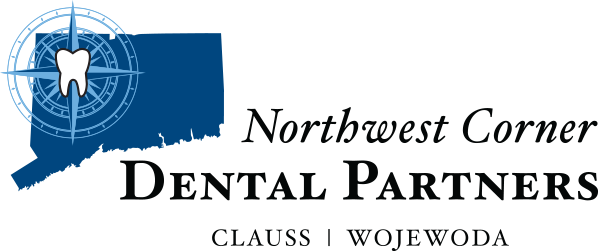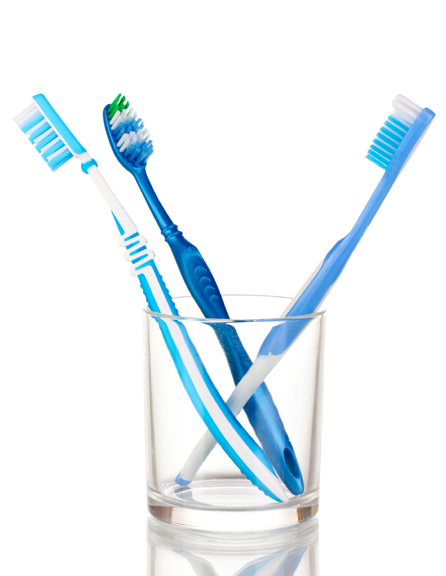Preventive Care & Cleanings
EXAMS
A comprehensive dental exam will be performed by your dentist if you are a new patient to the practice. At regular check-up exams, your dentist and hygienist will include the following:
-
- Examination of diagnostic x-rays (radiographs): Essential for the detection of decay, tumors, cysts, and bone loss. X-rays also help determine tooth and root positions in the oral cavity.
- Examination of Tooth Decay: All tooth surfaces will be checked for decay with special dental instruments.
- Oral Cancer Screening: Check the face, tongue, throat, tissues, and gums for any signs of oral cancer.
- Gum Disease Evaluation: Check the gums and bone around the teeth for any signs of periodontal disease.
- Examination of Existing Restorations: Check current fillings, crowns, veneers, etc.
- Occlusal or Bite Examination: Screen for wear, cracks, loose teeth, and other issues related to the way the teeth mesh together.

FLUORIDE
Fluoride is a mineral that occurs naturally in all water sources, including oceans, lakes and rivers. Research shows that fluoride helps prevent cavities in children and adults by making teeth more resistant to the acid attacks that cause cavities. Fluoride is nature’s cavity fighter, helping repair the early stages of tooth decay even before the decay can be seen.
There are two ways that you can benefit from fluoride: topically and systemically.
Topical fluoride is the type of fluoride you receive at the dental office or when you use dental products—such as toothpastes or mouth rinses. Systemic fluoride is ingested, usually through a public water supply, which in the United States applies to nearly 74 percent of the population. While teeth are forming under the gums, the fluoride taken in largely from drinking water and other beverages strengthens tooth enamel making it stronger and more resistant to cavities. This provides what is called a “systemic” benefit. After teeth erupt, fluoride helps rebuild (remineralize) weakened tooth enamel and reverse early signs of tooth decay. When you brush your teeth with fluoride toothpaste, or use other fluoride dental products, you are providing a “topical” benefit because the fluoride is applied to the surface of your teeth.
In addition, drinking fluoridated water and other fluoridated beverages continues to provide a topical benefit because it becomes part of your saliva, constantly bathing the teeth and helping to rebuild weakened tooth enamel. The maximum reduction in tooth decay occurs when fluoride is available systemically and topically. Studies show that community water fluoridation, the addition of fluoride to water to a recommended level for preventing tooth decay, prevents at least 25 percent of tooth decay in children and adults. In fact, community water fluoridation is noted as the single most effective public health measure to prevent tooth decay and the Centers for Disease Control and Prevention has proclaimed community water fluoridation as “one of 10 great public health achievements.”
SEALANTS
Dental sealants act as a barrier to prevent cavities. They are a plastic material usually applied to the chewing surfaces of the back teeth (premolars and molars) where decay occurs most often.
Thorough brushing and flossing help remove food particles and plaque from smooth surfaces of teeth. But toothbrush bristles cannot reach all the way into the depressions and grooves to extract food and plaque. Sealants protect these vulnerable areas by “sealing out” plaque and food.
Sealants are easy for your dentist to apply. The sealant is painted onto the tooth enamel, where it bonds directly to the tooth and hardens. This plastic resin bonds into the depressions and grooves (pits and fissures) of the chewing surfaces of back teeth. The sealant acts as a barrier, protecting enamel from plaque and acids. As long as the sealant remains intact, the tooth surface will be protected from decay. Sealants hold up well under the force of normal chewing and may last several years before a reapplication is needed. During your regular dental visits, your dentist will check the condition of the sealants and reapply them when necessary.
The likelihood of developing pit and fissure decay begins early in life, so children and teenagers are obvious candidates. But adults can benefit from sealants as well.
Key ingredients in preventing tooth decay and maintaining a healthy mouth are:
- brushing twice a day with an ADA-accepted fluoride toothpaste
- cleaning between the teeth daily with floss or another interdental cleaner
- eating a balanced diet and limiting snacks
- visiting your dentist regularly
Ask your dentist about whether sealants can put extra power behind your prevention program.

Call 860-482-8588 to schedule your appointment. Our office staff will be happy to assist you!

XRAYS
Dental X-rays are a useful diagnostic tool when helping your dentist detect damage and disease not visible during a regular dental exam. How often X-rays should be taken depends on your present oral health, your age, your risk for disease, and any signs and symptoms of oral disease. For example, children may require X-rays more often than adults because their teeth and jaws are still developing and their teeth are more likely to be affected by tooth decay than those of adults. Your dentist will review your history, examine your mouth and then decide whether or not you need X-rays.
If you are a new patient, the dentist may recommend X-rays to determine the present status of your oral health and have a baseline to help identify changes that may occur later. A new set of X-rays may be needed to help your dentist detect any new cavities, determine the status of your gum health or evaluate the growth and development of your teeth. If a previous dentist has any radiographs of you, your new dentist may ask you for copies of them. Ask both dentists to help you with forwarding your X-rays.
CLEANINGS
Professional dental cleanings are usually performed by a Registered Dental Hygienist. Your cleaning appointment will include a dental exam and the following:
- Removal of Calculus (tartar): Calculus is hardened plaque that has been left on the tooth for some time and is now firmly attached to the tooth surface. Calculus forms above and below the gum line and can only be removed with special dental instruments.
- Removal of Plaque: Plaque is a sticky, almost invisible film that forms on the teeth. It is a growing colony of living bacteria, food debris, and saliva. The bacteria produce toxins (poisens) that inflame the gums. This inflammation is the start of periodontal disease!
- Teeth Polishing: Removes stain and plaque that is not otherwise removed during the cleaning and scaling
HOMECARE
Brushing your teeth is an important part of your oral hygiene routine. For a healthy mouth and smile the ADA recommends you:
- Brush your teeth twice a day with a soft-bristled brush. The size and shape of your brush should fit your mouth allowing you to reach all areas easily.
- Make sure to use an ADA-accepted fluoride toothpaste.
- Replace your toothbrush every three or four months, or sooner if the bristles are frayed. A worn toothbrush won’t do a good job of cleaning your teeth.
The proper brushing technique is to:
- Place your toothbrush at a 45-degree angle to the gums.
- Gently move the brush back and forth in short (tooth-wide) strokes.
- Brush the outer surfaces, the inner surfaces, and the chewing surfaces of the teeth.
- To clean the inside surfaces of the front teeth, tilt the brush vertically and make several up-and-down strokes.
- Brush your tongue to remove bacteria and keep your breath fresh.
Of course, brushing your teeth is only a part of a complete oral care routine. You should also make sure to:
- Clean between teeth daily with floss or an interdental cleaner. Tooth decay-causing bacteria still linger between teeth where toothbrush bristles can’t reach. This helps remove plaque and food particles from between the teeth and under the gum line.
- Eat a balanced diet and limit between-meal snacks.
- Visit your dentist regularly for professional cleanings and oral exams.
Download the How to Brush PDF: How to Brush (PDF)
Talk to your dentist about what types of oral care products will be most effective for you. The ADA Seal lets you know the product has met ADA criteria for safety and effectiveness. Look for the ADA Seal on fluoride toothpaste, toothbrushes, floss, interdental cleaners, oral irrigators, mouth rinses and other oral hygiene products.
Flossing is an essential part of any oral health care routine. The American Dental Association recommends flossing at least once a day to achieve optimal oral health. By flossing daily, you help remove plaque from the areas between your teeth where the toothbrush can’t reach. This is important because plaque that is not removed by brushing and flossing can eventually harden into calculus or tartar. Flossing also helps prevent gum disease and cavities.
The most important thing about flossing is to do it. Pick a time of day when you can devote an extra couple of minutes to your oral hygiene. People who are too tired at the end of the day may benefit from flossing first thing in the morning or flossing after lunch.
And don’t forget, children need to floss too! You should be flossing your child’s teeth as soon as he or she has two teeth that touch. Because flossing demands more manual dexterity than very young children have, children are not usually able to floss well by themselves until they are age 10 or 11.
Keep in mind that flossing should not be painful. You may feel discomfort when you first start flossing, but don’t give up. With daily brushing and flossing, that discomfort should ease within a week or two. If your pain persists, talk to your dentist.
If you find flossing difficult, consider a different flossing method. People who have difficulty handling dental floss may prefer to use another kind of interdental cleaner such as a wooden plaque remover, dental pick or pre-threaded flosser. Ask your dentist how to use them properly to avoid injuring your gums. It could be that you simply need to try another type of dental floss—waxed, unwaxed, thick or comfort floss. Stick with it and you’ll have adopted a healthy hobby for life.
Download the How to Floss PDF: How to Floss (PDF)
